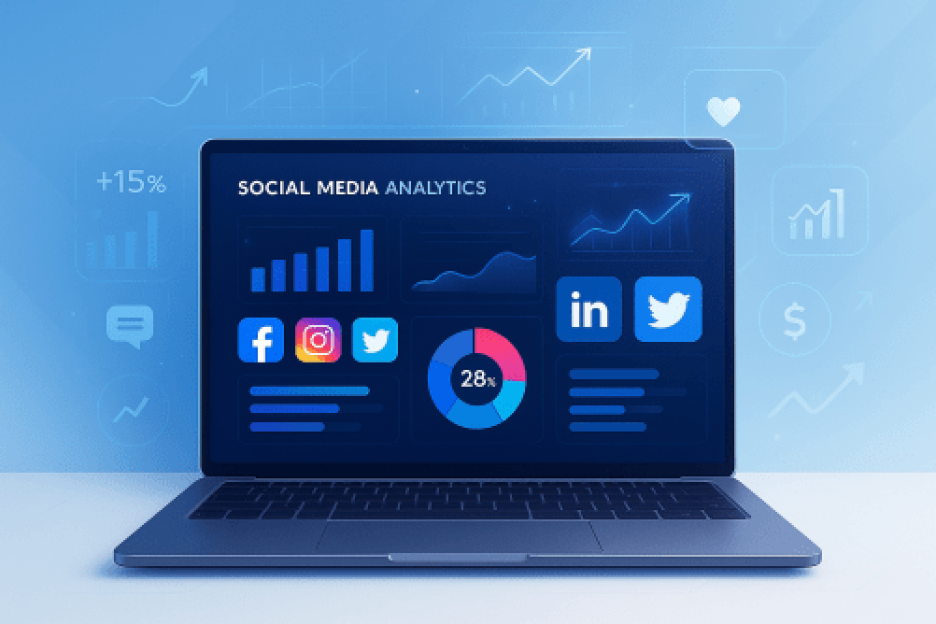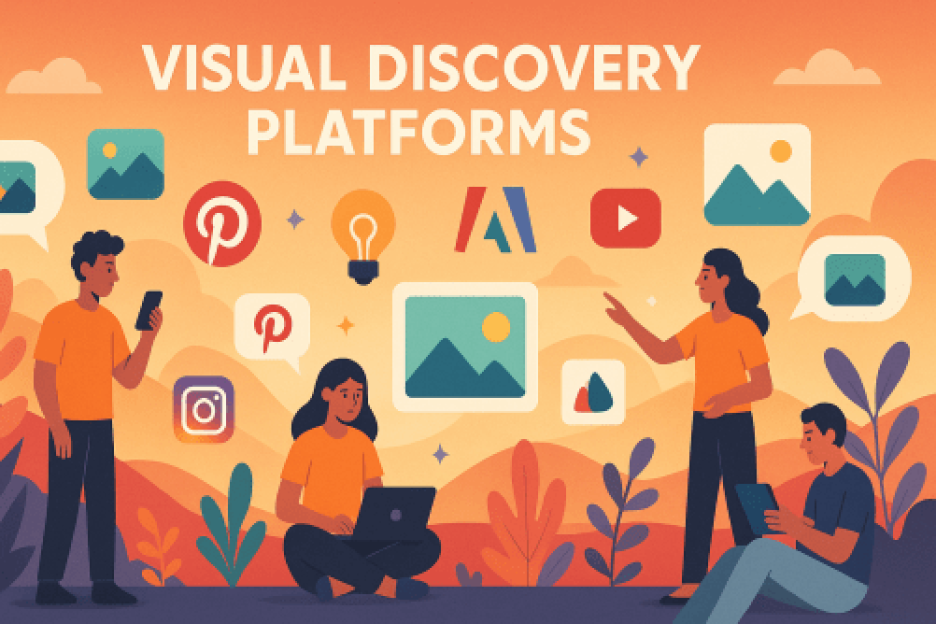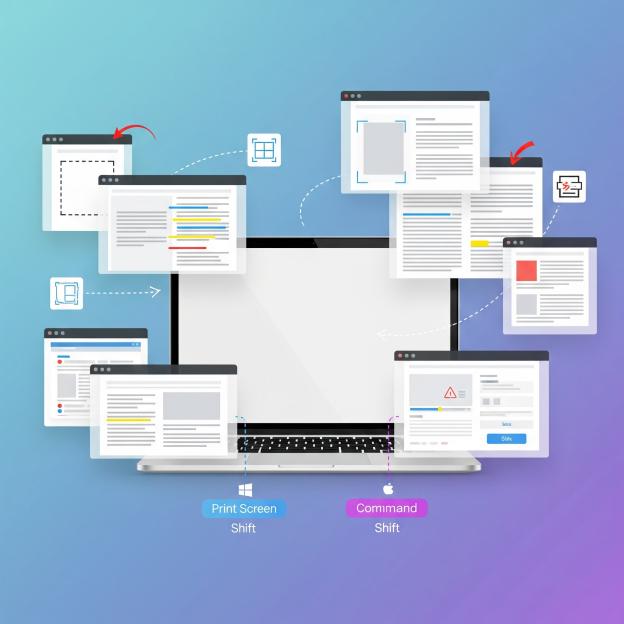You’ve just posted what you think is the perfect content across your social platforms. The likes start trickling in, comments begin appearing, and shares are happening. But here’s the million-dollar question â are you actually winning, or just getting digital applause? Without the right social media analytics tools, you’re essentially flying blind in a $147 billion industry where every click, every scroll, and every engagement could be the difference between skyrocketing success and expensive failure.
Table of Contents
- What Are Social Media Analytics Tools?
- Why Social Media Analytics Matter More Than Ever
- Top 15 Social Media Analytics Tools in 2025
- Key Features to Look for in Analytics Platforms
- How to Choose the Right Tool for Your Business
- Setting Up Your Analytics Dashboard
- Understanding Key Metrics and KPIs
- Advanced Analytics Strategies
- Common Mistakes to Avoid
- Future Trends in Social Media Analytics
What Are Social Media Analytics Tools?
Social media analytics tools are specialized software platforms designed to collect, analyze, and interpret data from your social media activities across multiple platforms. These powerful digital assistants work around the clock, tracking everything from basic engagement metrics like likes and shares to complex behavioral patterns and conversion tracking.
Think of these tools as your personal social media detectives. They dig deep into your content performance, audience behavior, competitor activities, and campaign effectiveness. Unlike basic platform insights provided by Facebook, Instagram, or Twitter, dedicated analytics tools offer cross-platform analysis, advanced reporting capabilities, and predictive insights that can transform your social media strategy.
The best social media monitoring tools don’t just show you what happened â they help you understand why it happened and predict what might happen next. They bridge the gap between posting content and achieving measurable business results, making them essential for any serious digital marketing effort.
Why Social Media Analytics Matter More Than Ever
The Rising Stakes of Social Media Marketing
In 2025, social media isn’t just about brand awareness anymore. With over 4.9 billion active social media users worldwide, platforms have become primary channels for customer acquisition, sales conversion, and brand loyalty building. Companies that leverage social media analytics effectively see 13% better ROI on their marketing spend compared to those flying blind.
Data-Driven Decision Making
Gone are the days when “gut feeling”; could guide your social media strategy. Today’s successful brands rely on concrete data to make informed decisions about content creation, posting schedules, audience targeting, and budget allocation. Social media analytics platforms provide the foundation for this data-driven approach.
Competitive Advantage
Your competitors are already using analytics tools to gain insights into market trends, audience preferences, and content performance. Without proper analytics, you’re essentially giving them a head start in the race for audience attention and market share.
ROI Measurement and Justification
Marketing budgets face increasing scrutiny, and social media teams must prove their value with concrete numbers. Analytics tools provide the metrics needed to demonstrate ROI, justify budget increases, and optimize spending for maximum impact.
Top 15 Social Media Analytics Tools in 2025
1. Hootsuite Analytics
Best for: Small to large businesses seeking comprehensive social media management
Hootsuite remains one of the most popular social media analytics platforms, offering robust reporting features alongside content scheduling and management capabilities. The platform supports over 35 social networks and provides detailed performance insights across all major platforms.
Key Features:
- Cross-platform analytics dashboard
- Custom report builder
- Team performance tracking
- Competitor analysis
- Advanced listening capabilities
Pricing: Starting at $99/month for professional plans Pros: User-friendly interface, extensive platform support, strong customer service Cons: Can be expensive for small businesses, limited advanced analytics in basic plans
2. Sprout Social
Best for: Mid-size businesses focusing on customer engagement
Sprout Social excels in combining analytics with social customer service features. Their analytics dashboard is particularly strong for engagement tracking and audience analysis, making it ideal for brands that prioritize community building.
Key Features:
- Advanced audience demographics
- Engagement rate optimization
- Social listening and sentiment analysis
- Competitive benchmarking
- Custom tagging for campaign tracking
Pricing: Starting at $249/month per user Pros: Excellent customer service features, intuitive reporting, strong mobile app Cons: Higher price point, limited customization options
3. Buffer Analyze
Best for: Small businesses and startups
Buffer’s analytics solution offers essential metrics without overwhelming complexity. It’s perfect for businesses just starting their analytics journey or those with limited budgets who still want professional-grade insights.
Key Features:
- Clean, simple dashboard
- Performance comparison tools
- Audience growth tracking
- Best time to post recommendations
- Story analytics for Instagram and Facebook
Pricing: Starting at $35/month Pros: Affordable pricing, easy to use, good integration with Buffer’s scheduling tools Cons: Limited advanced features, fewer platform integrations
4. Brandwatch
Best for: Enterprise-level social listening and market research
Brandwatch (now part of Cision) is a powerhouse for social listening and consumer insights. It’s particularly valuable for large organizations that need deep market research capabilities alongside standard analytics.
Key Features:
- Advanced social listening
- Trend analysis and prediction
- Influencer identification
- Crisis monitoring
- Market research capabilities
Pricing: Custom pricing (typically $800+/month) Pros: Powerful listening capabilities, excellent data visualization, strong API Cons: High cost, complex setup, steep learning curve
5. Socialbakers (now Emplifi)
Best for: Agencies and large brands with multiple clients
Emplifi offers comprehensive analytics with a focus on AI-powered insights and recommendations. Their platform is particularly strong for agencies managing multiple client accounts.
Key Features:
- AI-powered content recommendations
- Competitor intelligence
- Influencer analytics
- Cross-platform campaign tracking
- White-label reporting
Pricing: Custom pricing starting around $200/month Pros: Strong AI features, good for agencies, comprehensive competitor analysis Cons: Can be complex, pricing not transparent
6. Mention
Best for: Real-time monitoring and brand reputation management
Mention specializes in real-time social media monitoring, making it excellent for brands that need immediate alerts about mentions, crises, or trending topics related to their industry.
Key Features:
- Real-time alerts
- Sentiment analysis
- Influencer tracking
- Competitive monitoring
- Crisis management tools
Pricing: Starting at $41/month Pros: Excellent real-time monitoring, good value for money, easy setup Cons: Limited historical data, basic analytics compared to competitors
7. Keyhole
Best for: Hashtag and campaign tracking
Keyhole excels in hashtag analytics and campaign tracking, making it perfect for brands running hashtag campaigns or wanting to understand hashtag performance across platforms.
Key Features:
- Hashtag performance tracking
- Campaign analytics
- Real-time monitoring
- Influencer identification
- Historical data analysis
Pricing: Starting at $79/month Pros: Excellent hashtag analytics, real-time tracking, good visualization Cons: Limited to specific use cases, smaller platform coverage
8. Quintly
Best for: Detailed competitive analysis
Quintly focuses heavily on competitive benchmarking and analysis, providing detailed insights into how your performance compares to competitors across various metrics.
Key Features:
- Comprehensive competitor analysis
- Custom KPI tracking
- Advanced data visualization
- API access
- White-label reporting
Pricing: Starting at $300/month Pros: Excellent competitive features, detailed analytics, good customization Cons: Higher price point, focus may be too narrow for some users
9. Iconosquare
Best for: Instagram and Facebook analytics
Iconosquare specializes in Instagram and Facebook analytics, offering deep insights into visual content performance and audience engagement patterns.
Key Features:
- Instagram Stories analytics
- Hashtag performance tracking
- Competitor benchmarking
- Scheduling and publishing
- Community management tools
Pricing: Starting at $59/month Pros: Instagram specialization, good Stories analytics, affordable pricing Cons: Limited platform coverage, fewer advanced features
10. Agorapulse
Best for: Agencies and small businesses wanting all-in-one solutions
Agorapulse combines social media management with robust analytics, making it ideal for teams that want publishing, engagement, and analytics in one platform.
Key Features:
- Unified inbox for all platforms
- Detailed audience insights
- Competitor analysis
- Team collaboration tools
- ROI tracking
Pricing: Starting at $79/month Pros: All-in-one solution, good customer support, reasonable pricing Cons: May lack some advanced analytics features
11. Falcon.io (now part of Brandwatch)
Best for: Enterprise social media management
Falcon.io offers enterprise-grade social media analytics with strong workflow management and approval processes, making it ideal for large organizations with complex social media operations.
Key Features:
- Advanced workflow management
- Multi-brand analytics
- Customer care integration
- Advanced reporting
- Enterprise security features
Pricing: Custom enterprise pricing Pros: Enterprise features, strong security, comprehensive platform Cons: High cost, may be overkill for smaller businesses
12. Sendible
Best for: Agencies managing multiple clients
Sendible is designed specifically for agencies, offering white-label reporting, client management features, and scalable analytics across multiple accounts.
Key Features:
- White-label reporting
- Client management dashboard
- Cross-platform analytics
- Team collaboration tools
- Custom branding options
Pricing: Starting at $29/month Pros: Agency-focused features, affordable pricing, good scalability Cons: May lack some advanced analytics features
13. Tailwind
Best for: Pinterest and Instagram marketing
Tailwind specializes in Pinterest and Instagram analytics, offering unique insights into visual content performance and Pinterest-specific metrics.
Key Features:
- Pinterest analytics and scheduling
- Instagram optimization
- Hashtag suggestions
- Content discovery
- Influencer marketing tools
Pricing: Starting at $14.99/month Pros: Pinterest specialization, affordable pricing, good content suggestions Cons: Limited platform coverage, niche focus
14. Zoho Social
Best for: Small businesses using Zoho ecosystem
Zoho Social integrates seamlessly with other Zoho business tools, making it ideal for companies already using Zoho CRM, email marketing, or other Zoho products.
Key Features:
- CRM integration
- Lead tracking
- Multi-platform analytics
- Team collaboration
- Affordable pricing
Pricing: Starting at $10/month Pros: Excellent integration with Zoho products, very affordable, good basic features Cons: Limited advanced features, smaller platform coverage
15. Google Analytics 4 with Social Media Integration
Best for: Businesses wanting to integrate social media data with website analytics
While not exclusively a social media tool, Google Analytics 4 can track social media traffic and conversions when properly configured, providing valuable insights into how social media drives website behavior.
Key Features:
- Social media traffic tracking
- Conversion attribution
- Audience insights
- Free to use
- Integration with Google Ads
Pricing: Free (with Google Analytics 360 for enterprise) Pros: Free, comprehensive web analytics, good attribution modeling Cons: Requires technical setup, not social-media specific
Key Features to Look for in Analytics Platforms
Essential Analytics Features
When evaluating social media analytics tools, certain features are non-negotiable for effective social media measurement:
Cross-Platform Data Integration: Your tool should aggregate data from all major social platforms including Facebook, Instagram, Twitter, LinkedIn, TikTok, YouTube, and Pinterest. This unified view is essential for understanding your overall social media performance.
Real-Time Monitoring: The ability to track mentions, comments, and engagement as they happen is crucial for timely response and crisis management. Look for tools that offer real-time alerts and notifications.
Customizable Dashboards: Every business has unique KPIs and goals. Your analytics platform should allow you to customize dashboards to focus on the metrics that matter most to your organization.
Historical Data Access: Understanding trends requires historical context. Ensure your chosen tool provides access to historical data, ideally going back at least 12 months.
Advanced Analytics Capabilities
Sentiment Analysis: Understanding not just what people are saying, but how they feel about your brand is invaluable. Advanced sentiment analysis can help you gauge brand perception and identify potential issues early.
Competitor Benchmarking: Knowing how you stack up against competitors provides context for your performance. Look for tools that offer comprehensive competitor analysis and benchmarking features.
Influencer Identification: Many tools now include features to identify potential influencers and brand advocates within your audience, helping you build strategic partnerships.
Attribution Modeling: Understanding which social media activities drive conversions is essential for ROI measurement. Advanced attribution modeling helps connect social media activities to business outcomes.
Reporting and Visualization
Automated Reporting: The ability to schedule and automatically generate reports saves time and ensures stakeholders receive regular updates on social media performance.
Data Visualization: Complex data needs to be presented in understandable formats. Look for tools with strong data visualization capabilities including charts, graphs, and interactive dashboards.
Export Capabilities: You should be able to export data in various formats (PDF, Excel, PowerPoint) for further analysis or presentation to stakeholders.
White-Label Options: For agencies or businesses that need to present reports to clients or executives, white-label reporting options that can be branded with your company’s logo and colors are valuable.
How to Choose the Right Tool for Your Business
Assessing Your Business Needs
Business Size and Complexity: Small businesses might need basic analytics and affordable pricing, while enterprises require advanced features, multiple user access, and robust security. Mid-size businesses often need a balance of features and cost-effectiveness.
Platform Focus: If your audience is primarily on Instagram and Facebook, you might choose a tool that specializes in these platforms. B2B companies might prioritize LinkedIn analytics, while e-commerce brands might focus on Instagram and Pinterest.
Team Structure: Consider who will be using the tool. If you have a large team, look for tools with good collaboration features, user management, and varying permission levels.
Budget Considerations: Analytics tools range from free (Google Analytics) to thousands of dollars per month for enterprise solutions. Determine your budget and look for tools that provide the best value within your price range.
Technical Requirements
Integration Capabilities: Consider what other tools your business uses. CRM systems, email marketing platforms, and e-commerce solutions should integrate smoothly with your analytics tool.
API Access: If you have technical resources or want to build custom solutions, API access allows you to extract data and create custom applications or reports.
Data Security: Especially important for larger organizations, ensure your chosen tool meets your security requirements and compliance needs (GDPR, CCPA, etc.).
Scalability: Choose a tool that can grow with your business. Consider future needs for additional users, platforms, or advanced features.
Evaluation Process
Free Trials: Most quality analytics tools offer free trials. Take advantage of these to test the platform with your actual data and use cases.
Feature Comparison: Create a checklist of must-have features and compare how different tools address your specific needs.
Customer Support: Evaluate the quality of customer support through pre-sales interactions, documentation quality, and user reviews.
User Reviews: Research what current users say about the tool’s reliability, ease of use, and customer service quality.
Setting Up Your Analytics Dashboard
Initial Setup and Configuration
Account Setup: Begin by connecting all your social media accounts to your chosen analytics platform. This typically involves authorizing the tool to access your social media data through official APIs.
Goal Definition: Before diving into data, clearly define what you want to achieve with social media analytics. Common goals include increasing engagement, driving website traffic, generating leads, or improving customer service.
KPI Selection: Choose 5-10 key performance indicators that align with your business goals. Too many metrics can lead to analysis paralysis, while too few might miss important insights.
Baseline Establishment: Document your current performance levels to measure improvement over time. This baseline becomes crucial for demonstrating ROI and growth.
Dashboard Customization
Widget Selection: Most platforms offer various widgets for different metrics. Choose widgets that display your most important KPIs prominently, with secondary metrics available through drill-down options.
Time Frame Settings: Configure default time frames that make sense for your reporting cycle. Many businesses use weekly views for operational decisions and monthly views for strategic planning.
Alert Configuration: Set up alerts for significant changes in key metrics, mentions of your brand, or competitor activities. This ensures you can respond quickly to both opportunities and potential issues.
User Access: If you have a team, configure appropriate access levels. Executives might need high-level dashboard views, while social media managers need detailed operational data.
Best Practices for Dashboard Organization
Logical Grouping: Organize metrics into logical groups such as engagement metrics, audience growth, content performance, and competitive analysis.
Visual Hierarchy: Use size, color, and positioning to emphasize the most important metrics. Critical KPIs should be immediately visible without scrolling.
Regular Review and Updates: Dashboards should evolve as your business goals and strategies change. Schedule regular reviews to ensure your dashboard remains relevant and useful.
Understanding Key Metrics and KPIs
Engagement Metrics
Engagement Rate: This fundamental metric measures how actively your audience interacts with your content. Calculate it by dividing total engagements (likes, comments, shares, clicks) by total followers or reach, then multiply by 100 for a percentage.
Reach vs. Impressions: Reach represents the number of unique users who saw your content, while impressions count the total number of times your content was displayed. Understanding this distinction helps optimize content distribution strategies.
Click-Through Rate (CTR): Essential for measuring content effectiveness, CTR shows the percentage of people who clicked on your content after seeing it. Higher CTRs indicate more compelling content and better audience targeting.
Share Rate: Measures how often your content is shared, indicating its value and appeal to your audience. High share rates suggest content that resonates strongly with your community.
Growth Metrics
Follower Growth Rate: Track the percentage increase in followers over specific time periods. Healthy growth rates vary by industry and platform but generally range from 1-5% monthly for established accounts.
Audience Quality: Not all followers are equal. Analyze follower demographics, engagement levels, and authenticity to ensure you’re building a quality audience aligned with your target market.
Retention Rate: Measures how many new followers remain engaged over time. High acquisition with low retention might indicate targeting or content issues.
Content Performance Metrics
Top Performing Content: Identify which content types, topics, and formats generate the highest engagement, reach, and conversions. Use these insights to inform future content strategies.
Posting Frequency Impact: Analyze how posting frequency affects engagement and reach. Too few posts might limit visibility, while too many might overwhelm your audience.
Optimal Posting Times: Most analytics tools provide insights into when your audience is most active. Use this data to schedule posts for maximum visibility and engagement.
Conversion and ROI Metrics
Social Media ROI: Calculate return on investment by comparing social media costs (tools, advertising, staff time) to generated revenue. Track conversions from social media through UTM parameters and conversion tracking.
Lead Generation: Measure how many leads your social media efforts generate. Track form submissions, email signups, demo requests, or other lead indicators that originated from social platforms.
Customer Acquisition Cost: Determine how much it costs to acquire a customer through social media compared to other channels. This helps optimize budget allocation across marketing channels.
Advanced Analytics Concepts
Attribution Modeling: Understand the role social media plays in the customer journey. Multi-touch attribution helps identify how social media contributes to conversions that might be credited to other channels.
Lifetime Value Analysis: Connect social media acquisition to long-term customer value. Customers acquired through social media might have different value profiles than those from other channels.
Cohort Analysis: Track groups of users acquired during specific time periods to understand behavior patterns and optimize acquisition strategies.
Advanced Analytics Strategies
Competitor Analysis and Benchmarking
Competitive Intelligence: Regularly monitor competitor social media performance to identify opportunities and threats. Track their content strategies, engagement rates, follower growth, and campaign activities.
Market Share Analysis: Understand your position within your industry by comparing your social media metrics to competitors. Tools like Socialbakers and Quintly excel at this type of analysis.
Gap Analysis: Identify areas where competitors outperform you and develop strategies to close these gaps. This might involve content topics, posting frequency, or platform usage.
Trend Identification: Use competitor data combined with your own performance to identify emerging trends in your industry before they become mainstream.
Audience Segmentation and Personas
Demographic Analysis: Divide your audience by age, gender, location, and interests to create targeted content strategies for different segments.
Behavioral Segmentation: Group audiences based on how they interact with your content. High engagers might receive different content than passive followers.
Persona Development: Use analytics data to create detailed audience personas that inform content creation, advertising targeting, and overall marketing strategy.
Custom Audience Creation: Leverage analytics insights to create custom audiences for paid advertising campaigns, improving targeting precision and ROI.
Content Optimization Strategies
A/B Testing: Systematically test different content elements including headlines, images, posting times, and formats to optimize performance.
Content Lifecycle Analysis: Track how content performs over time to understand optimal posting frequencies and content refresh strategies.
Cross-Platform Optimization: Analyze how the same content performs across different platforms and optimize for each platform’s unique characteristics.
Seasonal Trend Analysis: Identify seasonal patterns in your content performance and audience behavior to plan campaigns and content calendars more effectively.
Predictive Analytics
Trend Forecasting: Use historical data to predict future performance and identify potential opportunities or challenges before they occur.
Audience Growth Modeling: Predict future audience growth based on current trends and planned marketing activities.
Content Performance Prediction: Some advanced tools use AI to predict how new content will perform based on historical data and current trends.
Common Mistakes to Avoid
Data Collection and Analysis Errors
Vanity Metrics Focus: Avoid focusing solely on metrics like follower count or total likes without considering their business impact. Engagement rate, conversion rate, and ROI are typically more meaningful for business success.
Insufficient Data History: Making decisions based on short-term data can lead to poor strategies. Ensure you have sufficient historical data (at least 3-6 months) before making significant strategy changes.
Platform Bias: Don’t assume what works on one platform will work on others. Each platform has unique characteristics, audiences, and best practices that require platform-specific strategies.
Ignoring Context: Always consider external factors that might influence your metrics. Seasonal trends, industry events, news cycles, and algorithm changes can all impact performance.
Strategic and Operational Mistakes
Over-Analysis Paralysis: While data is important, spending too much time analyzing and not enough time acting can hurt performance. Set regular review cycles and stick to them.
Lack of Goal Alignment: Ensure your social media metrics align with broader business objectives. Social media success should contribute to overall business success, not exist in isolation.
Inconsistent Measurement: Use consistent measurement methods and time periods for accurate trend analysis. Changing measurement approaches makes it difficult to track progress over time.
Ignoring Qualitative Data: Don’t rely solely on quantitative metrics. Comments, feedback, and sentiment provide valuable context that numbers alone cannot capture.
Tool Selection and Usage Errors
Feature Overload: Choosing tools with more features than you need can lead to confusion and wasted resources. Focus on tools that excel at your most important requirements.
Inadequate Training: Ensure team members are properly trained on your analytics tools. Misinterpretation of data can lead to poor decision-making.
Single Tool Dependence: Relying on a single analytics tool can limit your perspective. Consider using multiple tools or cross-referencing data for important decisions.
Ignoring Tool Limitations: Every analytics tool has limitations. Understand what your tool can and cannot measure to avoid misinterpretation of results.
Future Trends in Social Media Analytics
Artificial Intelligence and Machine Learning
Predictive Analytics: AI-powered tools are becoming increasingly sophisticated at predicting content performance, optimal posting times, and audience behavior patterns.
Automated Insights: Machine learning algorithms can now identify patterns and insights that humans might miss, providing automated recommendations for strategy optimization.
Sentiment Analysis Evolution: Natural language processing improvements are making sentiment analysis more accurate and nuanced, better understanding context and emotion in social media communications.
Content Generation Insights: AI tools are beginning to provide insights into which types of AI-generated content perform best, helping marketers optimize their content creation strategies.
Privacy and Data Regulation Impact
First-Party Data Focus: With increasing privacy regulations and the decline of third-party cookies, social media analytics will rely more heavily on first-party data collection and analysis.
Privacy-Compliant Analytics: Tools are evolving to provide insights while respecting user privacy, using techniques like differential privacy and data aggregation.
Consent Management: Analytics tools are integrating consent management features to ensure compliance with regulations like GDPR and CCPA.
Advanced Attribution and Measurement
Multi-Touch Attribution: Attribution modeling is becoming more sophisticated, better understanding the complex customer journey across multiple touchpoints and platforms.
Cross-Device Tracking: Improved ability to track user behavior across devices provides better insights into the complete customer journey.
Offline Attribution: Growing capability to connect online social media activities to offline actions and purchases, providing a more complete view of social media ROI.
Real-Time and Live Analytics
Instant Insights: Real-time analytics capabilities are becoming more sophisticated, allowing for immediate strategy adjustments during campaigns or content releases.
Live Event Monitoring: Enhanced capabilities for monitoring and analyzing social media activity during live events, product launches, or crisis situations.
Automated Response Systems: Integration with automated response systems that can react to analytics insights in real-time, adjusting campaigns or content distribution automatically.
Platform Evolution and New Metrics
Emerging Platform Integration: As new social platforms emerge, analytics tools must quickly adapt to provide insights from these new channels.
Video and Visual Analytics: Enhanced analytics for video content, including watch time, drop-off points, and engagement patterns specific to video formats.
Voice and Audio Analytics: As audio content grows (podcasts, voice messages, audio rooms), analytics tools are developing capabilities to measure and analyze audio content performance.
Augmented Reality Metrics: New metrics and measurement capabilities for AR filters and experiences as these become more prevalent in social media marketing.
Conclusion
Social media analytics tools have evolved from simple engagement counters to sophisticated business intelligence platforms that can drive significant competitive advantages. The key to success lies not just in choosing the right tools, but in understanding how to leverage them effectively to achieve your specific business objectives.
As we move through 2025, the landscape of social media analytics continues to evolve rapidly. Artificial intelligence, privacy regulations, and new platform features are reshaping how we collect, analyze, and act on social media data. Businesses that stay ahead of these trends while maintaining focus on fundamental analytics principles will be best positioned for success.
Remember that analytics tools are only as valuable as the insights they provide and the actions you take based on those insights. The most sophisticated platform in the world won’t improve your social media performance if you don’t use its data to make informed decisions and optimize your strategies.
Whether you’re a small business just starting with social media analytics or an enterprise looking to upgrade your current capabilities, the investment in quality analytics tools and the expertise to use them effectively will pay dividends in improved performance, better ROI, and stronger competitive positioning.
The future of social media marketing belongs to those who can effectively harness the power of data to create more engaging content, build stronger communities, and drive measurable business results. Choose your analytics tools wisely, invest in proper training and setup, and commit to data-driven decision making â your social media success depends on it.







